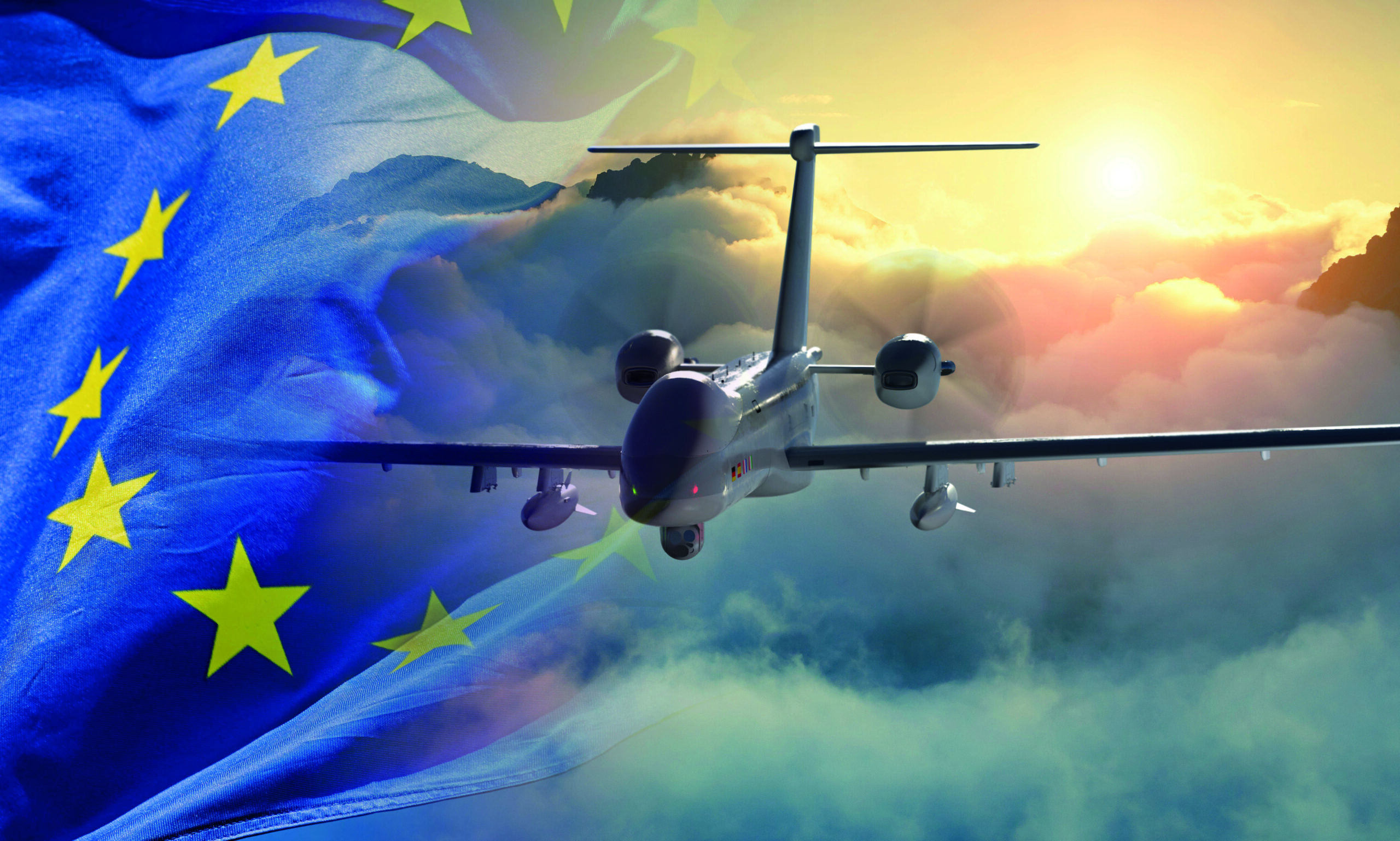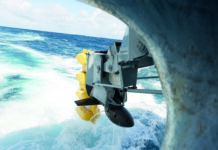Just nine days before the invasion of Ukraine by Russian Forces, in light of a deteriorating security environment, the European Commission put forward a number of initiatives to enhance security and defence cooperation within the EU framework. This was followed on 21 March by the presentation of the ‘EU Strategic Compass on Security and Defence’ where, in its foreword, the High Representative for the European Union for Foreign Affairs and Security Policy/Vice President of the European Commission (HR/VP) Josep Borrell, highlighted “the need to ensure that we turn the EU’s geopolitical awakening into a more permanent strategic posture.”
In the Strategic Compass chapter devoted to investing in defence expenditure, which elaborates on the EU’s strategic orientation, the Council highlights the importance of the Permanent Structured Cooperation (PESCO), which, according to a concurrent HR/VP statement, “is a decisive contribution for the development of Europe’s capacity to act autonomously. It is key for the development of strong and integrated defence capabilities available to the EU, which will allow us to react effectively to the most demanding circumstances”.
A Treaty-Based Framework
PESCO is a treaty-based framework to deepen defence cooperation among the 25 participating member states (almost all EU nations except Malta and Denmark), who are capable and willing to do so. Established by the EU Council on 11 December 2017, setting out a list of 20 binding common commitments in the areas of defence investment, capability, development and operational readiness, PESCO differs from other forms of cooperation for the legally binding nature of the commitments undertaken voluntarily by the participating member states.
PESCO’s structure and governance is based on a two-layer structure. The Council responsible for the overall policy direction and decision-making, including the assessment on whether participating member states are fulfilling their commitments, where only the PESCO members participate in the vote, and the single project level managed by the participating member states. The European External Action Service (EEAS), including the EU Military Staff and the European Defence Agency (EDA), jointly provide secretariat functions for all PESCO matters and a single point of contact for member states and institutions the PESCO Secretariat.
Governing PESCO
PESCO develops capability projects responding to the EU priorities identified by the EU member states through the Capability Development Plan (CDP), also taking into account the results of the Coordinated Annual Review on Defence (CARD) run by the European Defence Agency (EDA). Eligible projects could benefit from financing under the European Defence Fund (EDF). The latter is ‘a competitive industrial programme, providing financial incentives for industries to foster defence cooperation from research to the development phase of capabilities including prototypes through co-financing from the EU budget’.
EDF actions supporting prototyping undertaken in the context of PESCO projects may benefit from increased EU co-financing through an extra 10 per cent bonus. By the end of 2022, the EDF will have invested €1.9Bn in defence research and capability development projects. The EDF has been preceded by the European Defence Industrial Development Programme (EDIDP) which is the first ever EU grant programme targeting defence capability development.
Mitigating Capability Shortfalls
The Council adopts PESCO projects, following a recommendation by the HR/VP. Currently there are a total of 60 projects put forward since March 2018 in four waves. The first two were launched in 2018, one in 2019 and one in 2021, while the next call for project proposals will take place in July 2022. ‘In the EU framework and notably through the PESCO and the EDF’, the Strategic Compass highlights that the EU ‘is already developing command and control systems, armoured vehicles, missile systems and artillery, patrol corvettes, unmanned air and maritime systems, electronic warfare capabilities, space surveillance, cyber rapid response and high-tech training systems.’
However, there is ‘a need to invest further in strategic enablers, and more generally in the capabilities necessary to conduct the full range of missions and operations as set out in our agreed level of ambition’. The EU will therefore enhance its efforts ‘to mitigate critical capability shortfalls such as strategic airlift, space-based connectivity and communication assets, amphibious capabilities, medical assets, cyber defence and Intelligence, Surveillance and Reconnaissance (ISR) capabilities and Remotely Piloted Aircraft Systems (RPAS)’ according to the text of the Strategic Compass.
The EU needs to reduce fragmentation and develop next generation capabilities, committing to taking forward the recommendations of the first-ever CARD Report published in 2020, including the agreed six capability focus areas that would benefit from enhanced defence cooperation among member states:
- the Main Battle Tank
- Soldier Systems
- European Patrol Class surface ship
- Anti-Access Area Denial capacities
- Countering Unmanned Aerial Systems
- Defence in Space
- Enhanced Military Mobility.
PESCO Projects
The latest wave of PESCO projects launched in November 2021 has anticipated these efforts and recommendations with the establishment of 14 projects with a total participation of 21 EU member states within five military domains: land (2), air (6), cyber/C4ISR (2) and space (2).
The five-nation (Germany as coordinator, Czechia, France, the Netherlands, and Slovenia) Strategic Air Transport for Outsized (SATOC) aims to fill the critical shortfall for strategic transport for outsized and heavy cargo, a crucial enabler for military missions and operations. SATOC involves a gradual three-step approach. Firstly by identifying a sufficient number of project members (including third nations), harmonising requirements and finally identifying and agreeing on a common European solution for the transport of outsized cargo.
The four-nation (Spain as coordinator, Germany, Portugal, Slovenia) project Next Generation Small RPAS (NGSR) aims to develop a small (150 kg) highly deployable, multi-purpose and multi-role tactical RPAS, and deliver a first prototype in 2026. The system will be able to deploy, take off, land and operate in a tactical environment without need for a runway. The NGSR will also provide an additional European tactical RPAS as less than half of the platforms currently in service which were manufactured in Europe.
Further Projects
The six-nation (France as coordinator, Germany, Italy, Poland, Portugal, Austria) Defence of Space Assets (DoSA) project aims to increase the EU’s operational efficiency in the space domain by making the best use of current and future space assets. Its main objectives include defining which technologies and identifying common operational needs will be needed tomorrow to defend space assets.
The fourth wave also includes the Essential Elements of European Escort (4E) for the maritime area, Future Medium-size Tactical Cargo (FMTC), Rotorcraft Docking Station for Drones, Small Scalable Weapons (SSW) and Air Power projects among the air systems. The Main Battle Tank Simulation and Testing Centre (MBT-SIMTEC) and the EU Military Partnership (EU MilPart) are included in the land systems area, while the Common Hub for Governmental Imagery (CoHGI) is part of the space area. Lastly, Automated Modelling, Identification and Damage Assessment of Urban Terrain (AMIDA-UT) and Cyber Ranges Federations (CRF) are included in cyber defence and C4ISR (Command, Control, Communications, Computers) systems.
TWISTER
Among the other key programmes for the defence, but also the sovereignty and the autonomy of the EU, the most challenging is the TWISTER (Timely Warning and Interception with Space-based TheatER surveillance) capability project, which was implemented into PESCO in November 2019. Coordinated by France and including Finland, Germany, Italy, the Netherlands and Spain, the project seeks to develop a multi-role endo-atmospheric interceptor and a space-based early warning system to address emerging threats, with the funding support from the EDF.
Last December, an industrial consortium led by MBDA involving 51 companies from 14 countries, which according to the company’s CEO Éric Béranger, responded to the EDF call for a concept exploration study for the effector, while the ODIN’s EYE (multinatiOnal Development INitiative for a Space-based missilE earlY-warning architecture) project was established for the initial study on the development of a European space-based missile early warning (SBMEW) capability to create a situational threat awareness against ballistic and hypersonic threats and generate the basis for European or national actions. Financed by EDIDP 2020, the latter 24-month project is coordinated by a German company, OHB System, and involves industries from 13 countries.
The European MALE RPAS
On 24 February, on behalf of Germany, France, Italy and Spain, OCCAR awarded the European MALE RPAS Stage 2 contract to the Airbus Defence and Space for the development and manufacture of 20 MALE air systems and more than five years of initial in-service support. This is one of the two programmes which received a direct award – in this case to strengthen European sovereignty in a sector without a European product – the other being the European Secure SOftware defined Radio (ESSOR) to develop an interoperable, secure defence communications system compliant with ESSOR and Software Communication Architecture (SCA). The latest ESSOR programme achievement was the successful enabling demonstration of armies from different member states to communicate on the battlefield using their own radios.
The European Patrol Corvette
On 9 December, the consortium, including Fincantieri, Naval Group and Navantia, and coordinated by a Naviris joint venture between the first two companies, submitted the industrial proposal related to the Modular Multirole Patrol Corvette (MMPC) call of the EDF in order to develop the first common naval capability represented by the PESCO European Patrol Corvette programme. The latter foresees the coordination of Italy and the participation of France, Spain, together with Portugal as an observer.
OCCAR is also leading the Mk III contract for the mid-life upgrade of the TIGER combat helicopter, which was awarded on behalf of France and Spain to Airbus Helicopter and MBDA last March. In conjunction, OCCAR awarded a contract to Safran Electronics and Defense, for the development and procurement of a new optronic system.
The EDIDP-financed REACT (Responsive Electronic Attack for Cooperation Tasks) programme connected to the PESCO Airborne Electronic Attack (AEA) project and aimed at providing a design for Air Electronic Attack Capability, allowing air forces to conduct operations in a contested anti-access/area denial environment, is on the verge to be implemented into OCCAR by its participating states including Spain (as REACT coordinator), Germany and Italy, with Sweden as a potential future participating nation until the process of joining is achieved.
LynkEUs
The LynkEUs is the first technological and industrial contribution to the objectives of the three-nation (France as coordinator, Belgium, Cyprus) PESCO EU Beyond Line Of Sight (BLOS) project led by MBDA France and involving 13 partners and subcontractors from five countries (adding Estonia and Sweden). The project aims to define a preliminary concept of operations for a BLOS European capability and demonstrate it through a full-scale firing campaign.
Among the other ongoing projects, the European Medical Command (EMC), coordinated by Germany, together with other 13 nations, to provide the EU with an enduring medical capability to coordinate military medical resources is operational, as for the Cyber Rapid Response Teams and mutual assistance in cyber security (CCRT). The latter is led by Lithuania and involves another five nations, and consists of a team of cyber specialists, which has been deployed by the EU for the first time in the context of the current conflict in Ukraine.
Funding Situation
Within the EDIDP 2020, on June 2021, the EU allocated €158.3M to 26 projects, of which 15 are being developed in the context of PESCO.
The first PESCO Strategic Review was conducted in 2020 and as a result, the Council provided guidance for the next PESCO phase (2021-2025) in terms of overall aim, key policy goals, processes, as well as incentives to improve the fulfilment of the more binding commitments. A next review is foreseen by 2025. With the launch of the last wave of projects in November 2021, more information was provided on the status of the overall PESCO framework and projects, with the Council adoption of two recommendations which set out more precise objectives for the second initial Phase of PESCO 2021-2025 and on the progress made by the project members towards fulfilling their commitments.
PESCO Moving Forward
Of the 46 projects (the EU Training Mission Competence Centre was successfully closed in March 2020 with a set of recommendations) approved in the first three waves covering all military domains, estimating the status of the projects’ activities, it concluded that between 24 to 26 out of the 46 ongoing projects will reach an initial operational capability around 2025. Among the 26 identified PESCO projects that should produce concrete results by 2025, three relate to land and formations, three to maritime, five to cyber and C4ISR, eight to joint enabling and seven to training and facility capabilities.
The successful implementation of the EU CRRTs project underscores how project timelines vary across different domains. Capability projects involving the harmonisation of requirements, development of complex prototypes with the involvement of industrial consortia will be delivered via a longer timeline. ‘Larger capability projects have nevertheless taken smaller but significant steps forwards such as the European Patrol Corvette, while some projects such as military mobility have also seen third countries invited to join’, highlighted the EU, referring to the participation of the US, Canada and Norway, which are not PESCO member states and which were authorised to participate in the Military Mobility project (coordinated by the Netherlands) since May 2021.












